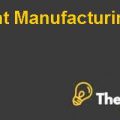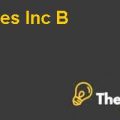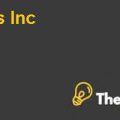DOW’S BID FOR ROHM AND HAAS Case Solution
Question 1
If Dow acquires Rohm and Haas then, this would be considered as the turning point in the history of both the companies. The costs of both the businesses would be reduced by the creation of the synergies such as reduced cyclicality, single cost structure, rationalization of non-core business operations, and combined earnings. Apart from this, the earning potential of both the firms would also increase when a specialty chemical business merges with the advanced material business, thus increasing the extent of the global scale operations. Rohm and Haas seems to be a strong operational and strategic fit for Dow Company.
A merger of both the companies would generate significant growth and cost synergies because of broad geographical reach, strong industry channels of Dow, and the benefits of both of the companies in their respective technologies and products. The CEO of Dow Company defines this deal as a jewel. The revenues of Dow Company would increase after acquisition due to expanded network, which the merged business will have in the emerging market and more portfolios could be created by both the businesses.
Furthermore, one of the strongest and motivated workforces have been retained by Rohm and Haas. The company has also maintained a strong culture of innovation and customer focus. Since, the business of Dow Company is cyclical with low value chemicals, the portfolio of advanced materials and specialty chemicals of Rohm and Haas therefore made it a tempting acquisition for Dow Company. This deal was another significant move by Dow Company for creating and maximizing the long term shareholder value.
Finally, if we analyze the $ 78 bid, then based on the current valuation of Rohm and Haan Company, the company is worth $ 46.57 per share under original forecast and $28.60 under revised forecast. This gives us a premium of -67% on the offer price of $ 78 per share. Therefore, the bid of $ 78 seems to be high based on the assumptions made by Dow Company. We can also say that the offer of Dow of $ 78 is above the value of the base case, including the synergy effects. However, if synergies are incorporated, then the value of the base case would be higher than $ 78, which shows that this bid is reasonable and Dow would acquire Rohm and Haas at a lower value after considering the synergy effects. The calculations for the total value of synergy have also been performed in the attached appendix.
Question 2
When we talk about the mergers and the acquisitions, then there are a number of inherent risks that need to be considered and these are not only the financial risks. Based on the information provided in the case, the three major risks inherent in the merger transaction are:
Risk of non-performance
In order to control non-performance, there are two specific provisions that are specific performance provision and termination fees. This award is the alternative to awarding the damages in the case of non-performance. Therefore, this agreement clearly addresses that there is a risk of non-performance inherent in this deal. The provisions of non-performance have been allocated mainly to Rohm and Haas Company, but its provisions allow damages to be borne by both the parties, if there is non-performance. However, both parties need to complete reasonable best effort for agreeing on the terms of the agreement, so that the risk is mitigated. Other provisions favor only Rohm; but again, they also allow damages to be granted to both Dow Company and Rohm and Haas Company....................
This is just a sample partial case solution. Please place the order on the website to order your own originally done case solution.













